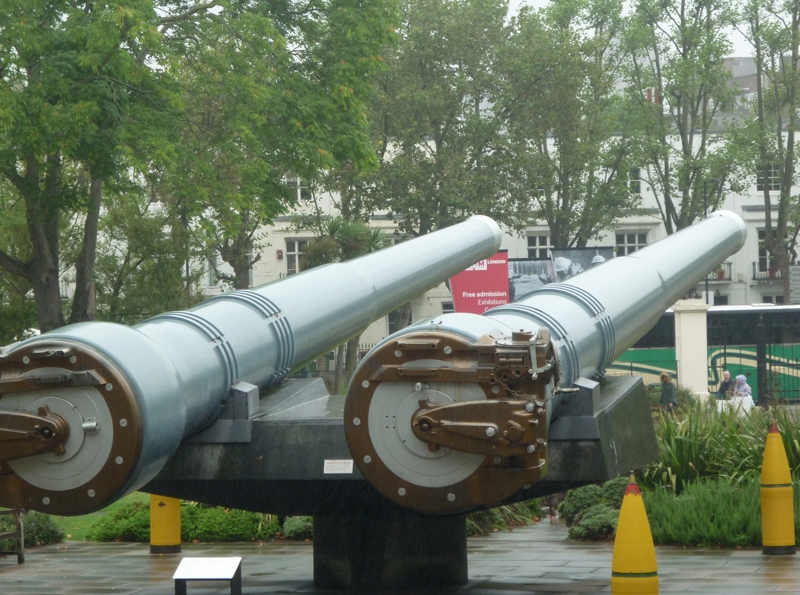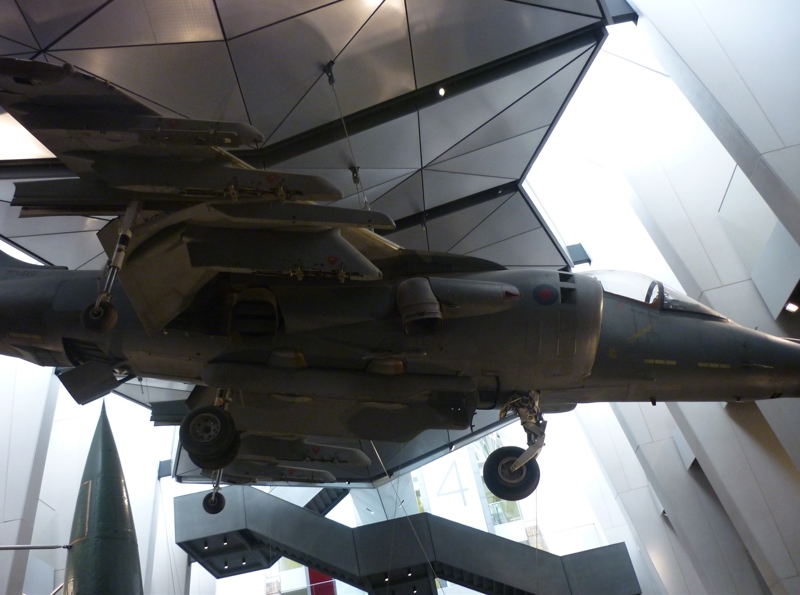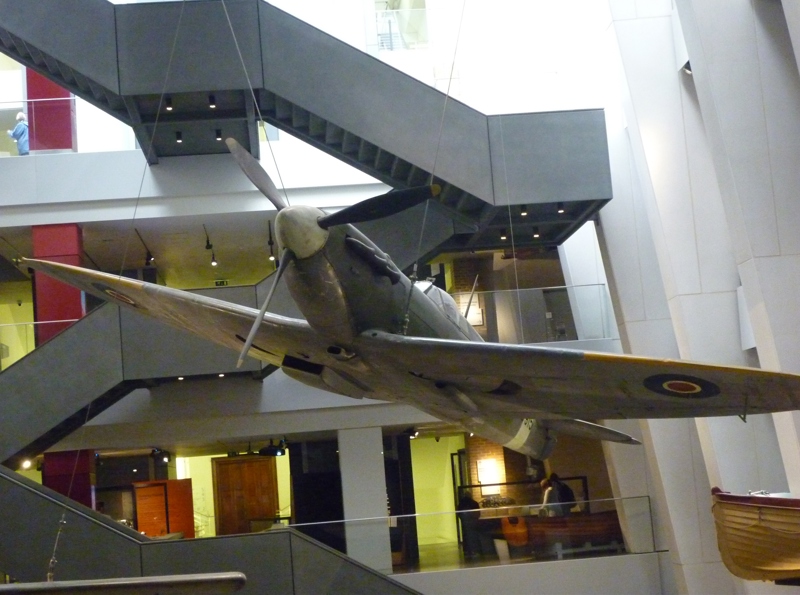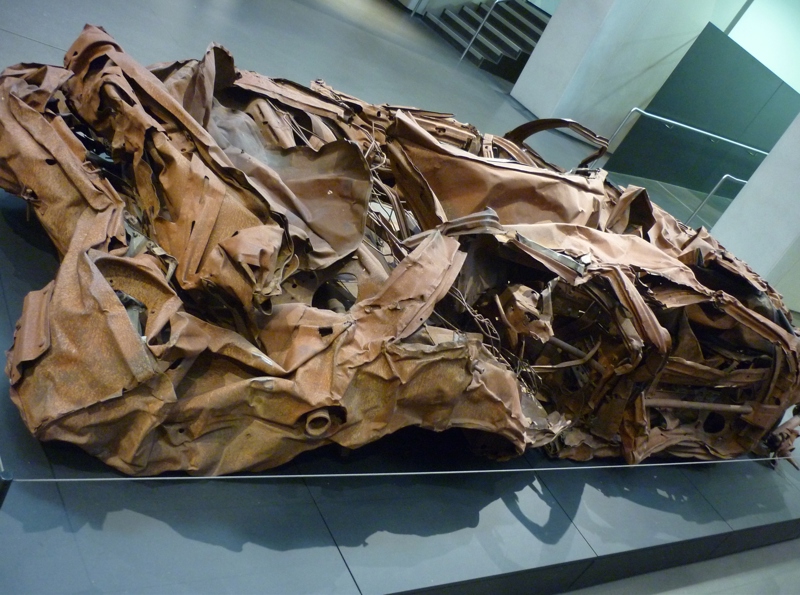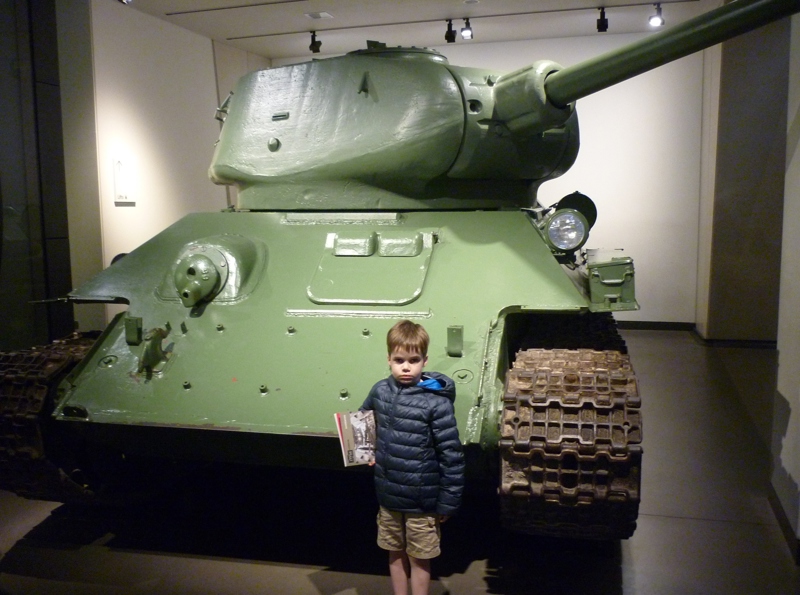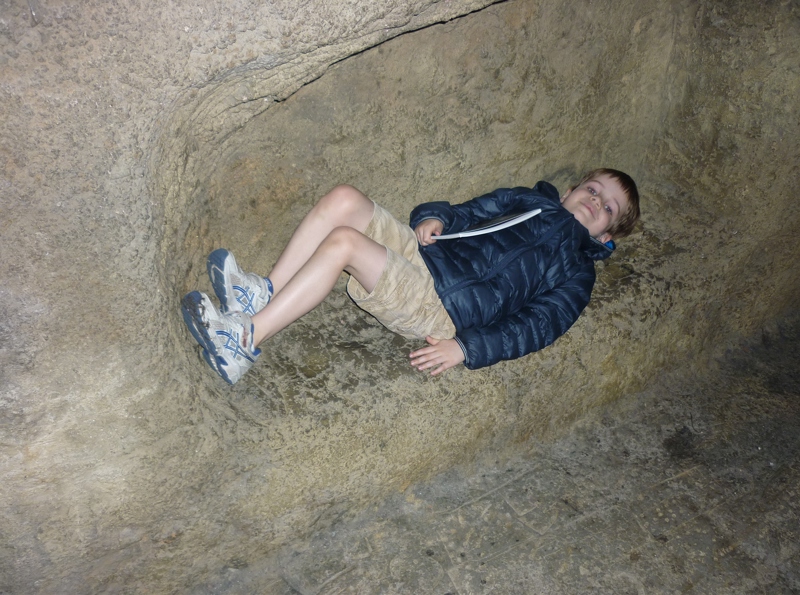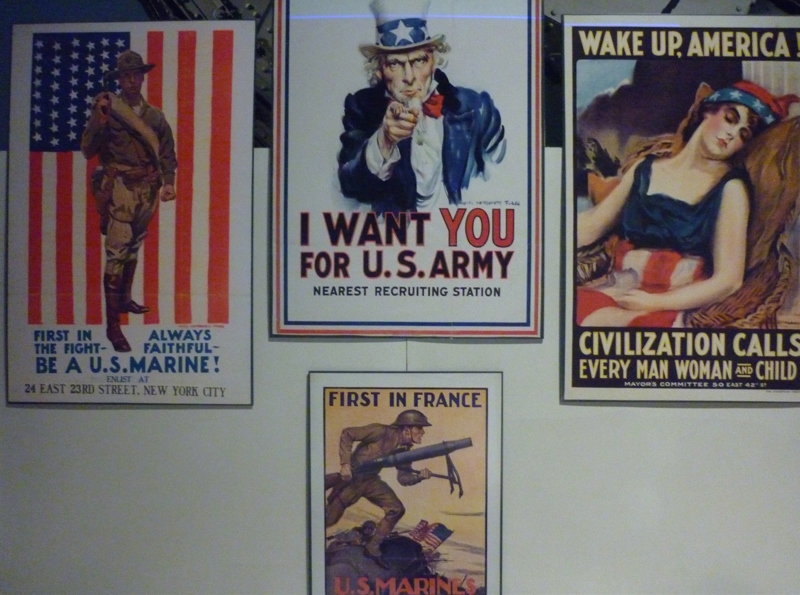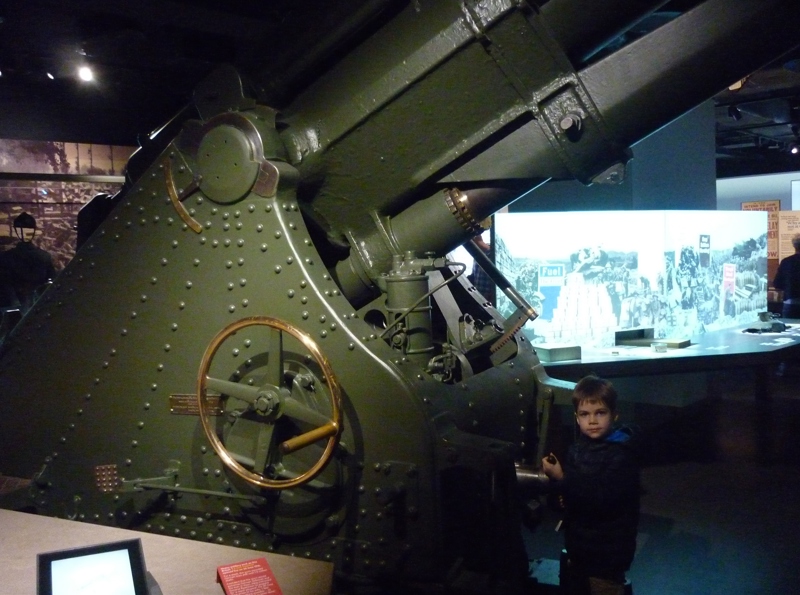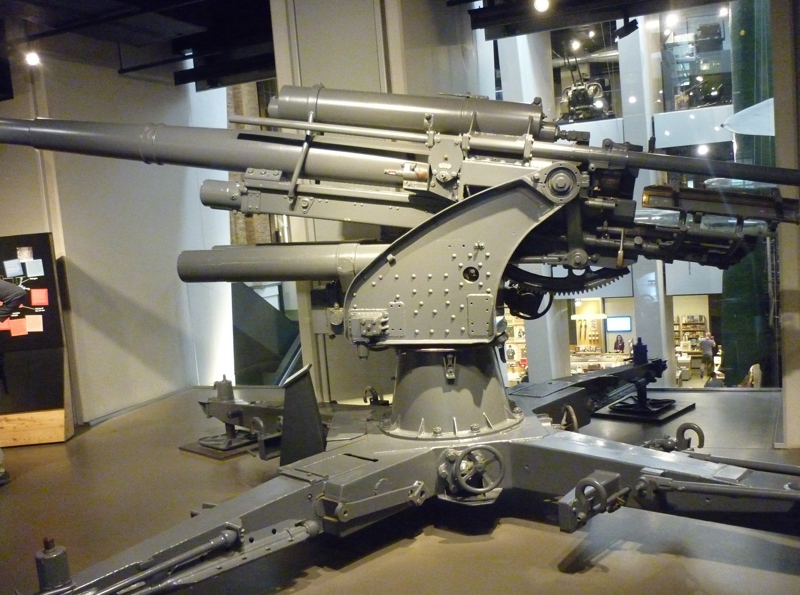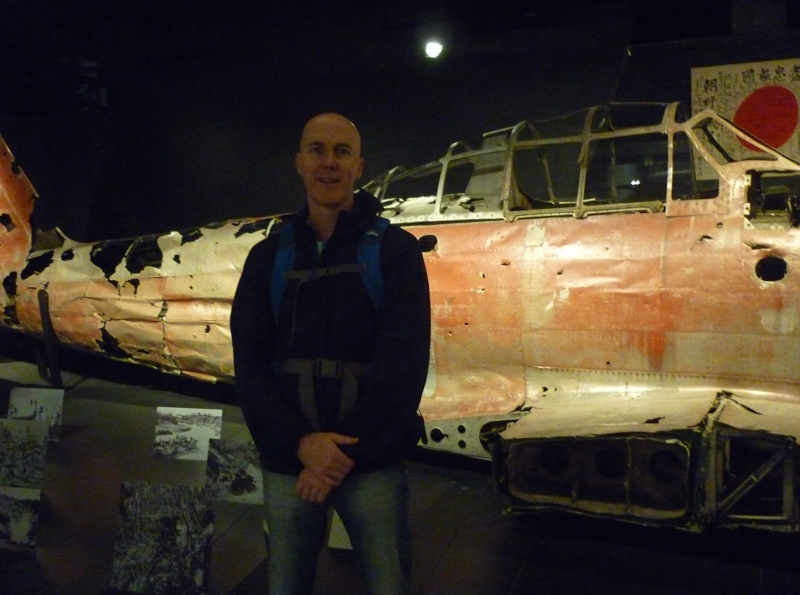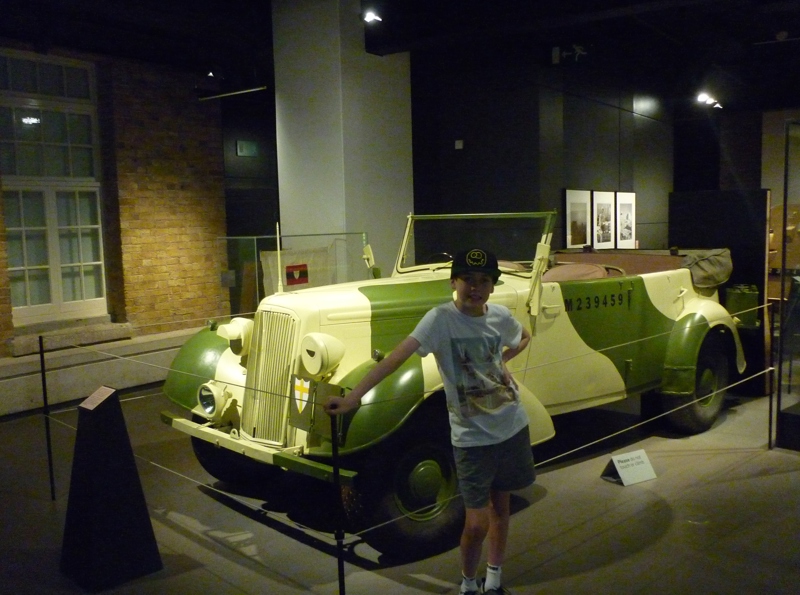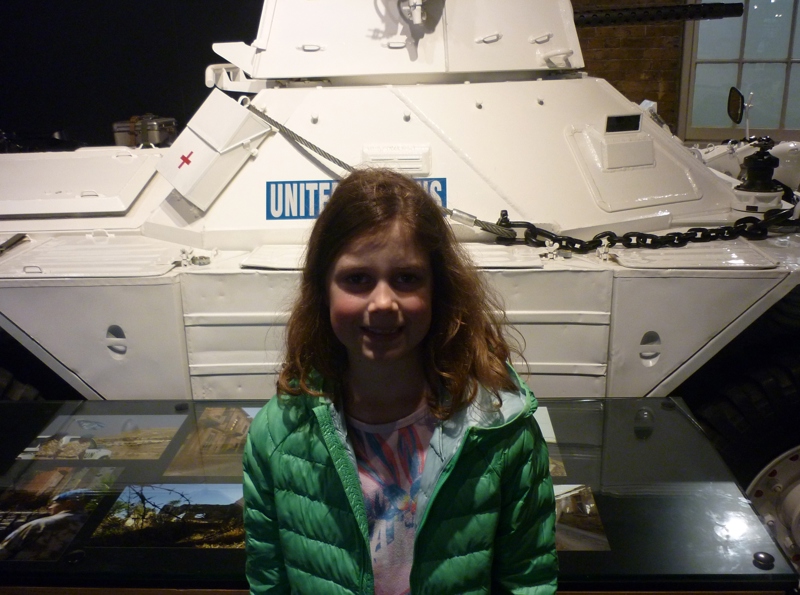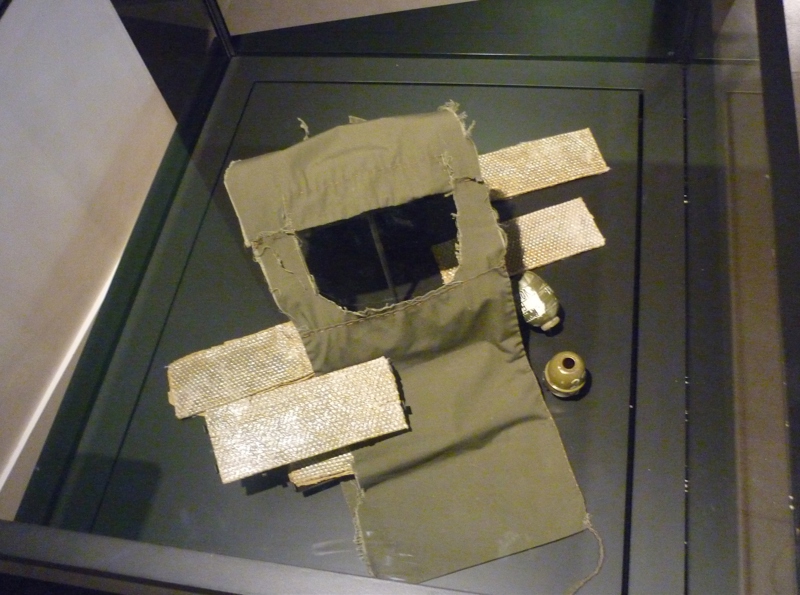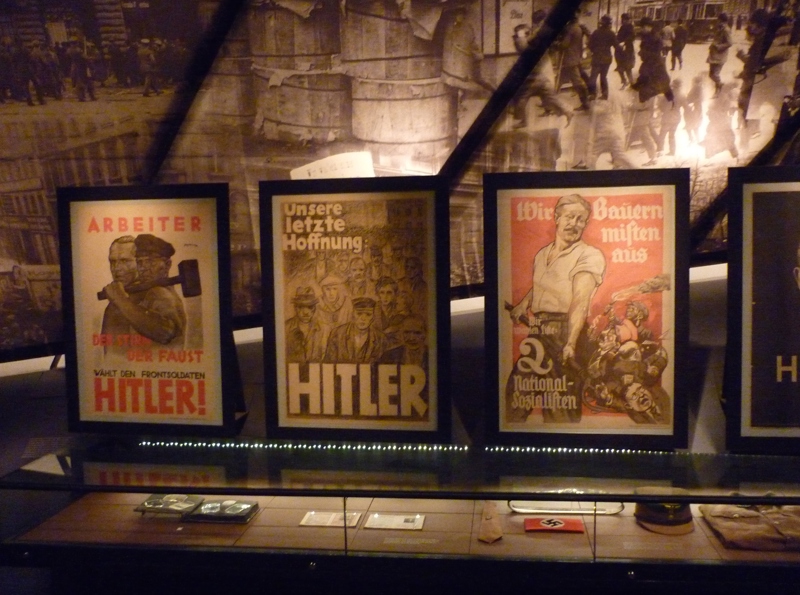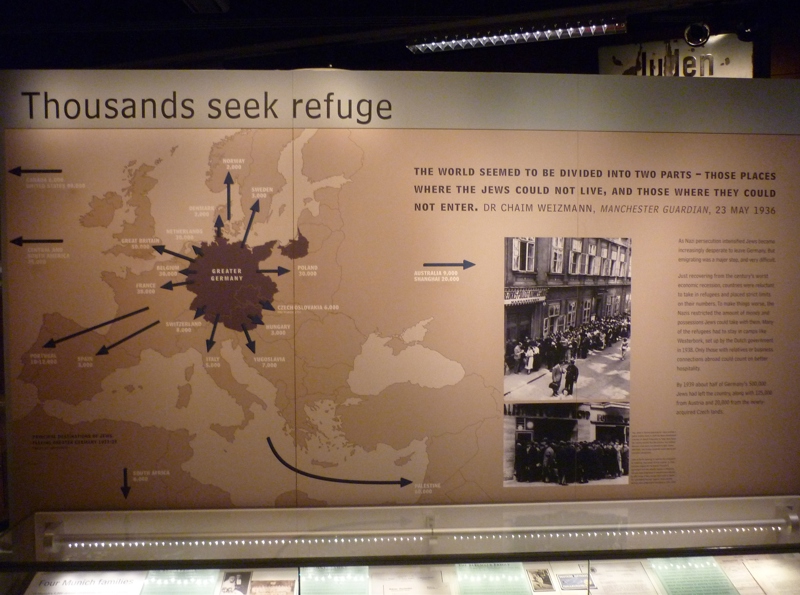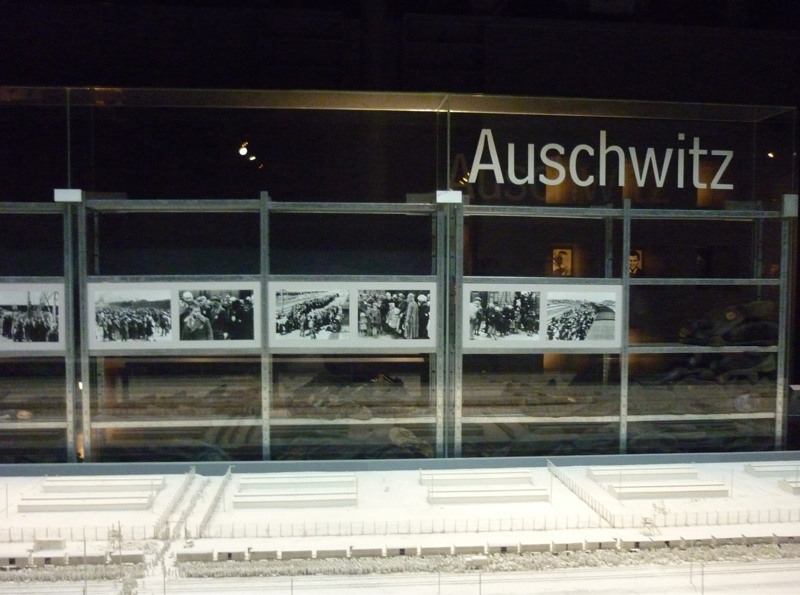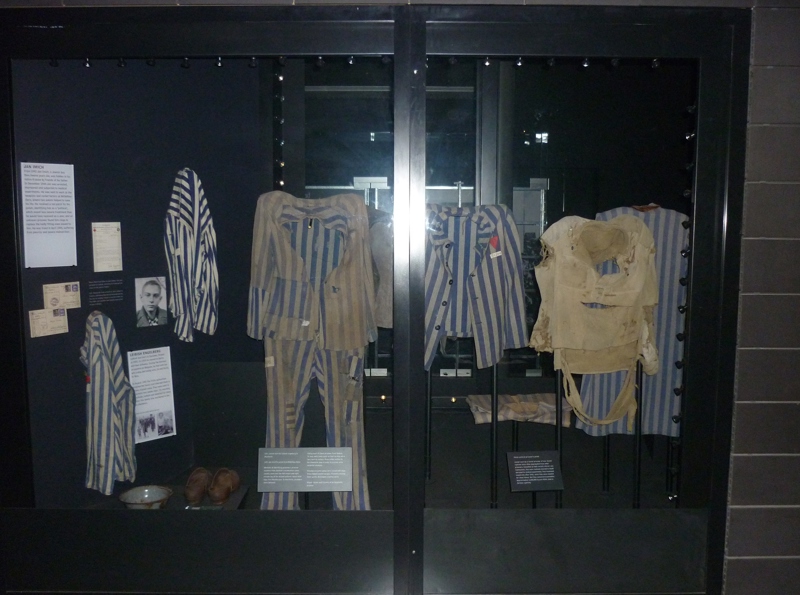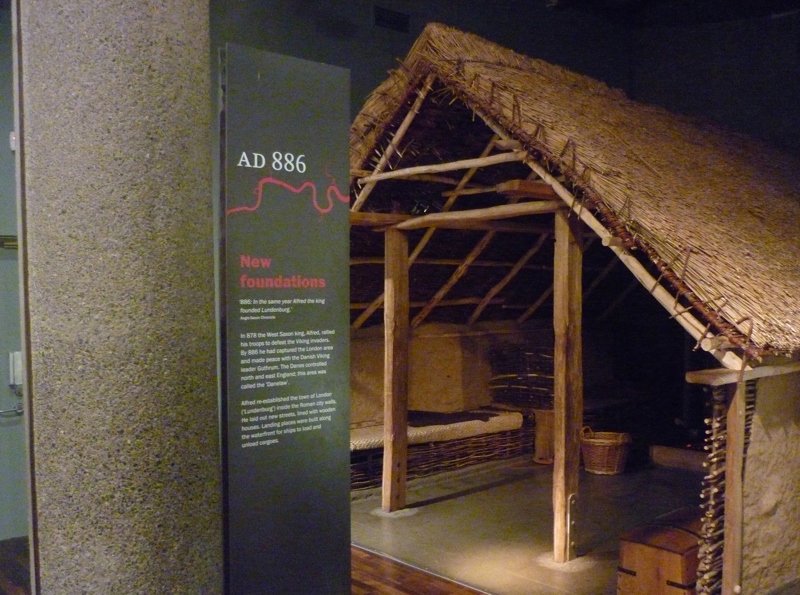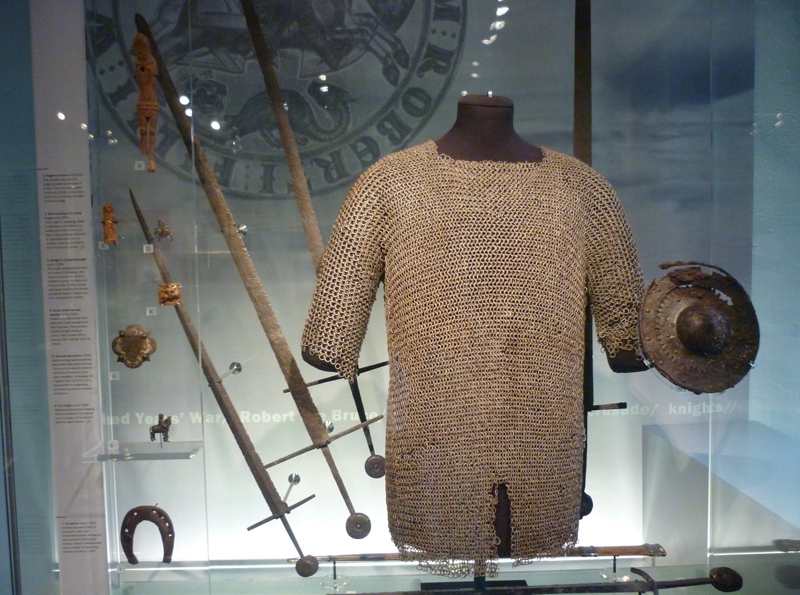Europe Trip
The Imperial War Museums manage the HMS Belfast, Churchill’s War Rooms (the only London sight that I’m disappointed we didn’t get to) and the London Imperial War Museum. It was this last museum that we were keen to check out today, under overcast, 20 degree skies.
We headed south from Vauxhall station for the first time, before changing to a Northern Line train for another three stops and alighting at Elephant and Castle station (the station was named after the famous pub on the corner, however there’s no definitive agreement as to how the pub got its name). One final note on the trains – they are quite different to Melbourne trains in that they’re narrower, and they do follow the shape of the tube tunnel through which they travel. As the power to the trains comes through the rails, there’s only minimal clearance between the train roof and the tunnel roof. If you’re a bit tall (say 190cm), then you need to stand right in the middle of the carriage, as the train roof curves either side. If you’re any taller then you’d better find a seat. Making up for their narrower body, the trains themselves consist of eight carriages, rather than the Melbourne six, so the stations are quite long.
Anyway, the Imperial War Museum is brilliant. It’s definitely up there with our best attractions, maybe just brought down a notch as it wasn’t as interactive as a couple of Oscar’s best. However we all thoroughly enjoyed ourselves, wishing we could have stayed longer.
This museum consists of five levels: level 1 is WWI, levels two and three are WW2, level four is devoted to MI5, MI6, modern warfare and the War on Terror, and level 5 is devoted to the Holocaust. All of the sections were fascinating, with lots of props, military equipment, blown up photos (no pun intended), audio visual displays, and lots of text printed in large easy to read fonts.
The big kids found a section on “London Families in the War” quite interesting, and Oscar loved the scale trench you walked through, complete with cut-out for sleeping in. Zach’s favourite was some of the espionage stuff and details of the storming of the Iranian Embassy in 1980 to free hostages – the first time the police had requested the SAS take over.
The Holocaust exhibit on level 5 was restricted to those aged 14 and over, and so Amelia and I had to rush through individually, disappointed we couldn’t take it all in. The exhibit told the story of life as a European Jew before Hitler, Hitler’s rise, the rounding up and imprisonment of the Jews, the concentration camps and forced labour, and of course Auschwitz and the other death camps.
Although we all know the story and know what happened, it was still incredibly profound just to look at all the rows of shoes, hear the tales told by survivors, see the layout and relics from the camps, and learn again how Hitler tried to hide the evidence of the camps during the German retreat. It was a graphic, haunting exhibit that kept us both speechless for some time afterwards.
Just an aside, when viewing some of the photos – note there are a couple that mightn’t immediately make sense. One depicts the remains of a car blown up by a Baghdad suicide bomber, and one is a piece of a window frame from the World Trade Center north tower. One is of a suicide bomber's vest.
Tired out, we concluded our visit with a late lunch at the museum cafe, before taking the train three further stations further east to the London Museum.
You could well argue that we’d had enough of museums, however the London Museum was strongly recommended by a local with a young family, and it didn't disappoint. This museum was a showcase on London’s history, covering Roman London (AD50-410), Medieval London (AD410-1558), War Fire and Plague (1550s-1660s), Expanding City (1670s-1850s), People’s City (1850s-1940s), World City (1950s-today).
This was another world class, well laid out, interactive exhibit. Oscar was a bit over it all as it had been a long day, but the older two were enthralled with every time period. There was costumes and period dress, swords and weapons, a thatched house example, a short film on the Great Plague, early model cars, and again the usual easy to read printed information. Mil’s favourite was some of the modern world stuff; I was more interested in the late tudor/early Medieval period i.e. around the King Henry VIII and a bit later.
So many excellent attractions – if I had to rank my top five they’d be: Tower Bridge, HMS Belfast, London Transport Museum, Science Museum and the Museum of London.
And so ends our time in the UK, tomorrow we’re up early to cross the channel into France.
James Burnet
34 chapters
15 Apr 2020
Day 13
Imperial War Museum and the London Museum
The Imperial War Museums manage the HMS Belfast, Churchill’s War Rooms (the only London sight that I’m disappointed we didn’t get to) and the London Imperial War Museum. It was this last museum that we were keen to check out today, under overcast, 20 degree skies.
We headed south from Vauxhall station for the first time, before changing to a Northern Line train for another three stops and alighting at Elephant and Castle station (the station was named after the famous pub on the corner, however there’s no definitive agreement as to how the pub got its name). One final note on the trains – they are quite different to Melbourne trains in that they’re narrower, and they do follow the shape of the tube tunnel through which they travel. As the power to the trains comes through the rails, there’s only minimal clearance between the train roof and the tunnel roof. If you’re a bit tall (say 190cm), then you need to stand right in the middle of the carriage, as the train roof curves either side. If you’re any taller then you’d better find a seat. Making up for their narrower body, the trains themselves consist of eight carriages, rather than the Melbourne six, so the stations are quite long.
Anyway, the Imperial War Museum is brilliant. It’s definitely up there with our best attractions, maybe just brought down a notch as it wasn’t as interactive as a couple of Oscar’s best. However we all thoroughly enjoyed ourselves, wishing we could have stayed longer.
This museum consists of five levels: level 1 is WWI, levels two and three are WW2, level four is devoted to MI5, MI6, modern warfare and the War on Terror, and level 5 is devoted to the Holocaust. All of the sections were fascinating, with lots of props, military equipment, blown up photos (no pun intended), audio visual displays, and lots of text printed in large easy to read fonts.
The big kids found a section on “London Families in the War” quite interesting, and Oscar loved the scale trench you walked through, complete with cut-out for sleeping in. Zach’s favourite was some of the espionage stuff and details of the storming of the Iranian Embassy in 1980 to free hostages – the first time the police had requested the SAS take over.
The Holocaust exhibit on level 5 was restricted to those aged 14 and over, and so Amelia and I had to rush through individually, disappointed we couldn’t take it all in. The exhibit told the story of life as a European Jew before Hitler, Hitler’s rise, the rounding up and imprisonment of the Jews, the concentration camps and forced labour, and of course Auschwitz and the other death camps.
Although we all know the story and know what happened, it was still incredibly profound just to look at all the rows of shoes, hear the tales told by survivors, see the layout and relics from the camps, and learn again how Hitler tried to hide the evidence of the camps during the German retreat. It was a graphic, haunting exhibit that kept us both speechless for some time afterwards.
Just an aside, when viewing some of the photos – note there are a couple that mightn’t immediately make sense. One depicts the remains of a car blown up by a Baghdad suicide bomber, and one is a piece of a window frame from the World Trade Center north tower. One is of a suicide bomber's vest.
Tired out, we concluded our visit with a late lunch at the museum cafe, before taking the train three further stations further east to the London Museum.
You could well argue that we’d had enough of museums, however the London Museum was strongly recommended by a local with a young family, and it didn't disappoint. This museum was a showcase on London’s history, covering Roman London (AD50-410), Medieval London (AD410-1558), War Fire and Plague (1550s-1660s), Expanding City (1670s-1850s), People’s City (1850s-1940s), World City (1950s-today).
This was another world class, well laid out, interactive exhibit. Oscar was a bit over it all as it had been a long day, but the older two were enthralled with every time period. There was costumes and period dress, swords and weapons, a thatched house example, a short film on the Great Plague, early model cars, and again the usual easy to read printed information. Mil’s favourite was some of the modern world stuff; I was more interested in the late tudor/early Medieval period i.e. around the King Henry VIII and a bit later.
So many excellent attractions – if I had to rank my top five they’d be: Tower Bridge, HMS Belfast, London Transport Museum, Science Museum and the Museum of London.
And so ends our time in the UK, tomorrow we’re up early to cross the channel into France.
